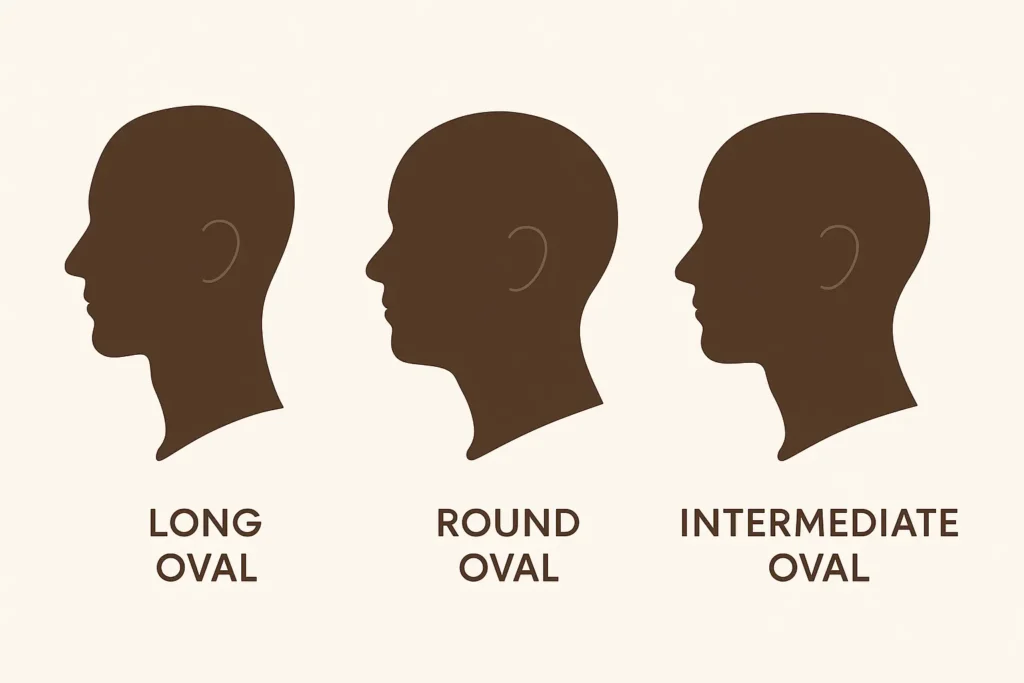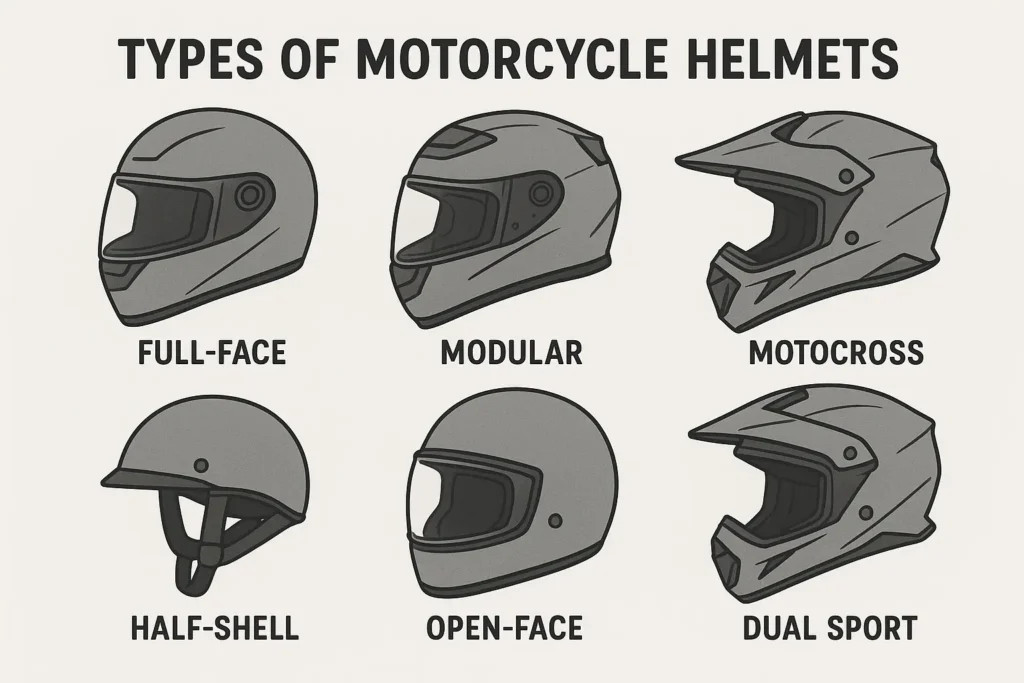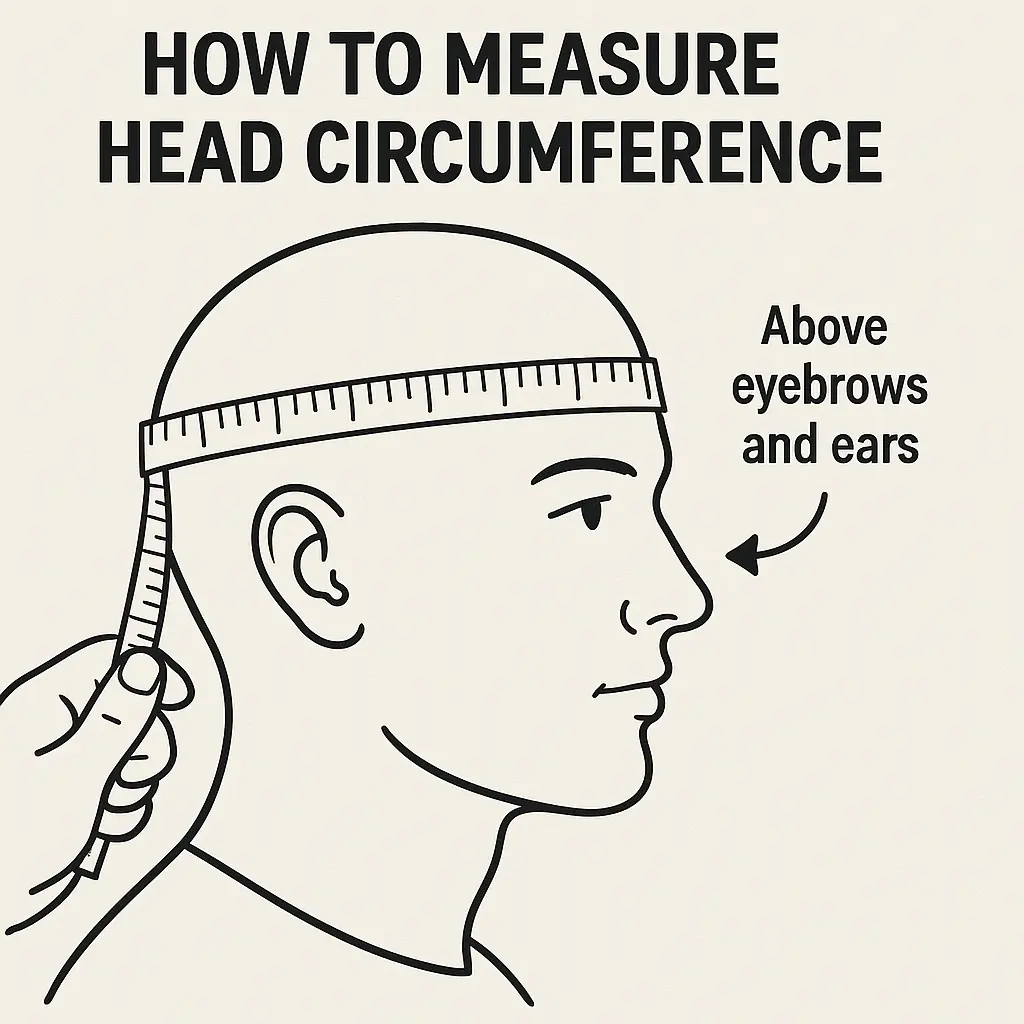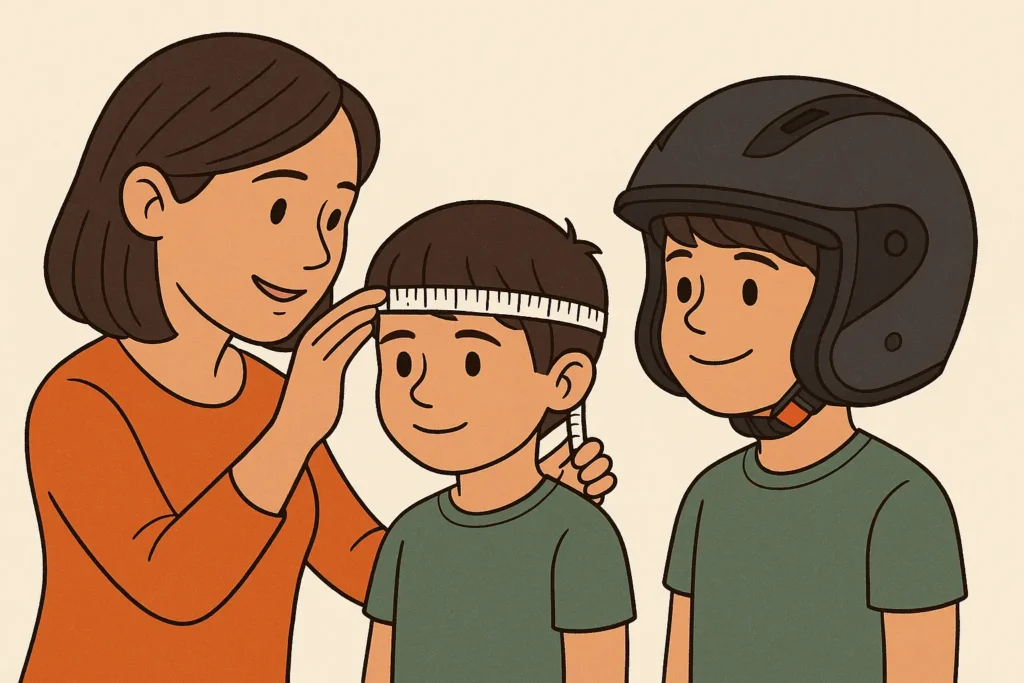Bike riding is probably one of the most thrilling and enjoyable means of traveling out there. It’s an unmatched feeling when you experience the wind rushing past your whole body. However, whether you are biking primarily for fun or for commuting on a daily basis, investing in appropriate safety gear becomes a necessity.
If you’re reading this article, you might already know that the single most important piece of safety gear that provides you with maximum protection is none other than a helmet. While also being a legal requirement, a proper helmet can give you mental peace and a ride of comfort.
In this motorcycle helmet sizing guide, we’ll be covering everything from head shapes to helmet types. By the end, you’ll have a crystal-clear understanding of sizing a motorcycle helmet and which option would be the best pick for you to invest in.
جدول المحتويات
تبديلFactors to Consider Before Sizing a Motorcycle Helmet
Before we jump to the measurement and sizing part, there are some factors every biker needs to know about. All of these factors will directly or indirectly affect your final decision about which helmet you should pick.

Head Shape
Each one of us has a different and unique body, and this applies to the shapes of heads as well. Generally speaking, head shapes can be divided into three main categories:
- Long oval: Heads in this category are longer from front to back than they are from side to side.
- Round Oval: These heads have almost equal front-to-back and side-to-side dimensions.
- Intermediate Oval: A shape between oval and round, with a slightly longer front-to-back measurement. This is also the most common head shape out there.
Safety Certifications
- Standard DOT (Department of Transportation): This safety standard is for helmets sold in the United States and is regulated by the U. S. Department of Transportation. Helmets with the DOT seal of approval are certified as meeting the minimum safety requirements necessary to be used on the roadways.
- ECE (Economic Commission for Europe): The ECE 22.05 certification is used for helmets in Europe and many other parts of the world. ECE-certified helmets are subjected to stricter testing standards than DOT.
- Snell (M2020D): The Snell Memorial Foundation has established this high-performance safety standard. The helmets certified under the Snell test are highly controlled and used by professional riders who, for any reason, demand utmost safety.

Types of Motorcycle Helmets
There are many types of motorcycle helmets made for different types of users. Knowledge of their differences is a precondition for making a choice.
Full-Face Helmets
From the full-face protection standpoint, these helmets are the best of all helmet types. A face shield protects the eyes and the nose, while the chin bar covers the bottom side of the face. Full-face helmets are best suited for racers and high-speed riders.
Modular Helmets (Flip-Up Helmets)
Modular helmets fall in between full-face and open-face helmets. Their chin bars can be lifted up when needed, making them super versatile. Touring and commuter crowds prefer modular helmets to take advantage of their dual modes.
Dual Sport (Adventure Helmets)
Adventure helmets are made for both on- and off-roading. They’re street-legal and come with visors while also having features for dirt rides like raised peaks and goggle compatibility.
Open-Face Helmets
These helmets only cover the top, back, and side parts of your head. They have a visor to shield the rider’s eyes, but the lower face and chin are fully exposed. They are used by people who want more visibility and an open feeling.
Half-Shell Helmets
Half-shell helmets only cover the top part of your head, making them the least protective helmet type of all. With no windshield or face protection, you’ll only see them on people with casual, retro rides.
Motocross Helmets (Off-Road Helmets)
These helmets are specially made for off-roading enthusiasts. They feature a large peak for debris protection and allow goggles to be worn with them. They’re very lightweight and provide superb ventilation, but are not street legal.
|
Helmet Type |
الايجابيات |
سلبيات |
الأفضل لـ |
|
Full-Face Helmets |
Maximum safety against impacts |
Least ventilated |
Racers and high-speed riders |
|
Best wind protection |
Cause heat buildup | ||
|
High noise reduction | |||
|
Modular Helmets (Flip-Up) |
Complete face protection |
More weight and noise than full-face helmets |
Touring and commuter riders |
|
Convenience while talking and eating |
Less comfort and safety with the raised chin bar | ||
|
Dual Sport (Adventure Helmets) |
Versatile for every terrain |
Noisier |
Riders who switch between on- and off-roading |
|
Good ventilation |
Less aerodynamic | ||
|
Open-Face Helmets |
Excellent visibility |
Worst frontal protection |
Riders who prefer an open feeling and more visibility |
|
Best comfort |
No extra features | ||
|
High ventilation | |||
|
Half-Shell Helmets |
– Lightweight |
– Least protection |
Casual and retro riders |
|
– Allows freedom |
– Face and chin are completely exposed | ||
|
– Aesthetically pleasing | |||
|
Motocross Helmets (Off-Road) |
– Ventilated structure |
– Less face protection than full-face helmets |
Off-roading enthusiasts |
|
– Lightweight |
– Not suitable for street riding | ||
|
– Dirt protection |
Sizing a Motorcycle Helmet
Now that we’re done with the prerequisites, let’s move to the real deal: measuring motorcycle helmet size. We have broken down this motorcycle helmet sizing guide into simple steps so you can get the most accurate measurement possible.

Preparing for Measurement
The first step of sizing a motorcycle helmet is to look for a soft measuring tape that can easily bend around the head. Can’t find one? You can use a flexible string instead and measure its length against a ruler afterward.
In both cases, we recommend asking a friend for help. It’s to minimize the chances of error, as this is the foundation for the upcoming steps.
Measuring Your Head
Now, wrap the tape or string around the fullest part of your head. This will be around half an inch above your eyebrows and just above your ears.
Check to see that the measuring tape isn’t too loose or too tight. Write down the measurement in either centimeters or inches.
Using the Helmet Sizing Chart
Use the sizing chart below to find the right size motorcycle helmet for you once you have your measurements.
Each company has its own sizing charts, which may be different from the others. So, just look at the chart that your manufacturer gave you.
|
Size |
Hat Size |
Head Circumference |
|
X-Small |
6 5/8 to 6 3/4 |
20.87″ – 21.26″ (53 – 54 cm) |
|
Small |
6 7/8 to 7 |
21.65″ – 22.05″ (55 – 56 cm) |
|
Medium |
7 1/8 to 7 1/4 |
22.44″ – 22.83″ (57 – 58 cm) |
|
Large |
7 3/8 to 7 1/2 |
23.23″ – 23.62″ (59 – 60 cm) |
|
X-Large |
7 5/8 to 7 3/4 |
24.02″ – 24.41″ (61 – 62 cm) |
|
2X-Large |
7 7/8 to 8 |
24.8″ – 25.2″ (63 – 64 cm) |
|
3X-Large |
8 to 8 1/8 |
25.6″ – 26″ (65 – 66 cm) |
|
4X-Large |
8 1/8 to 8 1/4 |
26.4″ – 26.8″ (67 – 68 cm) |
|
5X-Large |
8 3/8 to 8 1/2 |
27″ – 27.5″ (69 – 70 cm) |
Verifying the Perfect Helmet Fit
Congratulations! You’ve found your perfect fit, and now you’re ready to get a new, shiny helmet shipped right to your doorstep.
But sizing a motorcycle helmet doesn’t end here. Even after you receive your helmet, there’s some verification to be done, just to make sure you made the right choice.
Ensuring a Snug Fit
Once your helmet arrives, try it on to see if it fits well or not.
- It should feel a bit tight at first, but it must not cause any pain or pressure points on your temples or forehead. It also must not feel loose to move around freely.
- The helmet should fit evenly on your head and should not block your view in any way. You need to be able to see clearly from all sides.
- ال cheek pads should fit snugly against your cheeks, making you feel safe and secure.
The helmet will naturally loosen a little and fit your head better over time. But it should not be loose enough to let you turn your head from side to side.

Performing Fitment Tests
You should also perform these three tests to validate the fitment of your helmet.
- Headshake stability test: Test for headshake stability: Shake your head in all directions (up and down, side to side, and so on) while wearing the helmet. It should stay in place and not move or slide. If the helmet moves around too much, it doesn’t fit well.
- Skin contact test: Gently press the helmet downward to see if the inner lining makes direct contact with your scalp rather than just sitting above your hair.
- Chin strap test: Fasten the chin strap tightly and see if you’re able to fit more than two fingers between the strap and your chin. If yes, then your helmet might come off during a crash.
Comfort & Safety Check
Bike rides are usually long, so your helmet should feel comfortable throughout your journey. To check this, wear your helmet for at least 30 minutes while doing your normal daily chores to emulate a natural scenario.
If it feels too loose or uncomfortable, maybe this isn’t the right motorcycle helmet size for you. Either try a different size or look for another model.
Helmet Liners and Adjustability
Another thing that can affect your motorcycle helmet sizing is the helmet liners. These liners help create a comfortable fit and allow the helmet to conform to your head shape.
Most manufacturers make their helmets with adjustable liners to offer a customized fit for their riders.
- If your helmet comes with swappable padding, you can choose the most suitable padding for a more snug or looser fit as you like.
- Removable liners are also easy to take out for cleaning and replacement. Just be careful not to cause any damage to the padding while changing.
Helmet Style
The style of your helmet depends on your personal choices and preferences. However, you should always keep it secondary to security and comfort. You can choose any color or model you want, but always keep the following things in mind.
- Brighter-colored helmets stand out from the surroundings, so it will be easier to spot you riding on the road, which contributes to your safety.
- If you like to add tinted visors on your helmet, make sure to only use them on sunny days. Your visibility with tinted visors takes a significant hit in dark environments.

Children’s Motorcycle Helmet Sizing
Sizing children’s helmets needs even more attention, as their heads are still growing. They’re also more susceptible to falling, so a wrong-sized helmet can compromise their safety.
How to Measure Children’s Head Size
Sizing a motorcycle helmet for children is no different than sizing an adult’s. You just need to be extra cautious and find a fit that’s perfectly snug and secure. It will ensure the helmet stays in place in the event of a collision.
However, if your children are in the growing ages, you’ll need to purchase new helmets for them more frequently as their heads grow.
Just like with adult helmets, always refer to the manufacturer’s specific size chart, as they can slightly vary from one another. You can also get help from the motorcycle helmet size chart provided below.
|
Size |
Age Range |
Head Circumference (inches) |
Head Circumference (cm) |
|
X-Small |
0 – 2 years |
17.75″ – 18.5″ |
45 – 47 cm |
|
Small |
2 – 5 years |
18.5″ – 19.5″ |
47 – 50 cm |
|
Medium |
5 – 8 years |
19.5″ – 20.5″ |
50 – 52 cm |
|
Large |
8 – 12 years |
20.5″ – 21.25″ |
52 – 54 cm |
|
X-Large |
12+ years |
21.25″ – 22″ |
54 – 56 cm |
Find Age-Specific Helmets
A lot of manufacturers have separate helmet lines, specifically designed for children. They come with features like more cushioned padding and a better fitment system, which are more suited for children’s use.
If you’re buying a helmet for your young one, always keep these things in mind:
- Safety always comes first. So, always look for helmets with proper certifications (DOT, ECE, or Snell) to make riding secure and comfortable for the little ones.
- Once a helmet gets damaged, never try to reuse it, especially the ones made for children. Always replace it with a new one as soon as possible.
خاتمة
A well-fitted helmet might be the best investment a bike rider can make. Do some research, take your time, but choose a helmet that perfectly fits the shape of your head. Not only will it make your cruising times comfortable, but it’ll also be your life-saver in unfortunate situations.
If your helmet feels uncomfortable or you just want to take it off after wearing it for several minutes, don’t try to settle. Getting it replaced immediately will be the better option in the long run.
But this time, try to size your head properly and choose a helmet that fits your riding style and personality using our comprehensive motorcycle helmet sizing guide.
“Got some questions or need more information on motorbikes and helmets? Head over to our website to get all your answers!”
FREQUENTLY ASKED QUESTIONS
How long does a motorcycle helmet last, and when should I replace it?
According to most manufacturers, the average lifespan of a motorcycle helmet is 5 to 7 years, even if unused. It’s because the internal materials, like EPS foam liners, degrade over time. But if the helmet gets damaged, it should be replaced immediately.
Is it okay to use a secondhand helmet?
It is not recommended to use a secondhand helmet, as helmets are made to absorb only a single significant impact. If the helmet has been in a crash or is degraded, it’s not safe to reuse.
Should I buy a helmet based only on its safety rating?
Fit and comfort are also as important as the safety rating. A certified helmet that doesn’t fit well cannot protect you properly. Always look for a balance between safety, fit, and comfort.
How can I clean my helmet?
You can use a mild soap-water solution to clean the windshield and shell. The internal padding should be removed and hand-washed without using any harsh chemicals. Never soak or machine wash the helmet, as it can damage the internal structure.
How should I dispose of my old helmet?
If your helmet is past its age, make sure to dispose of it safely. Cut the chain strap so it’s not reusable, or check with a local recycling program. Some centers also accept old helmets as waste.
